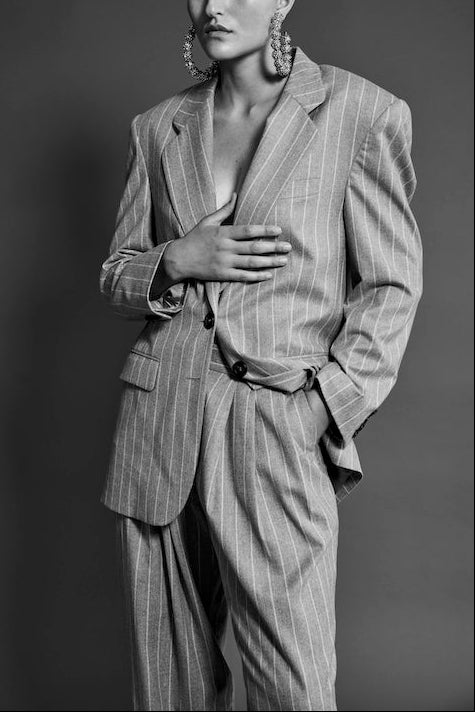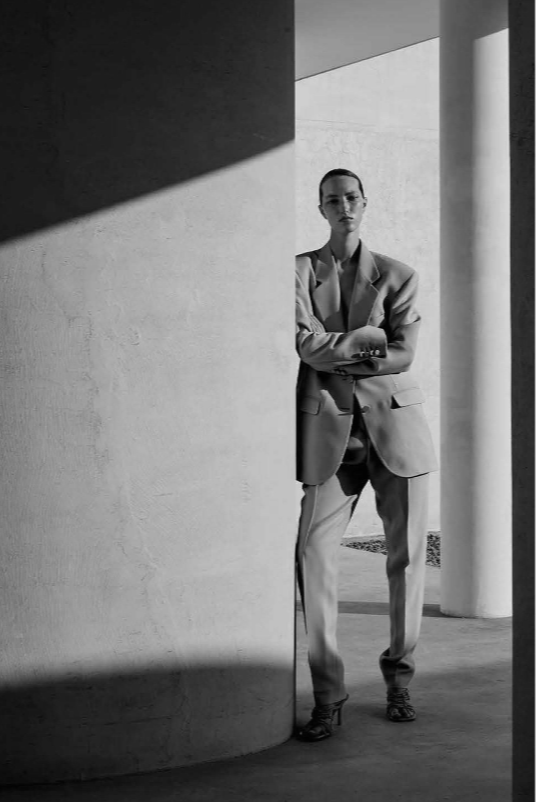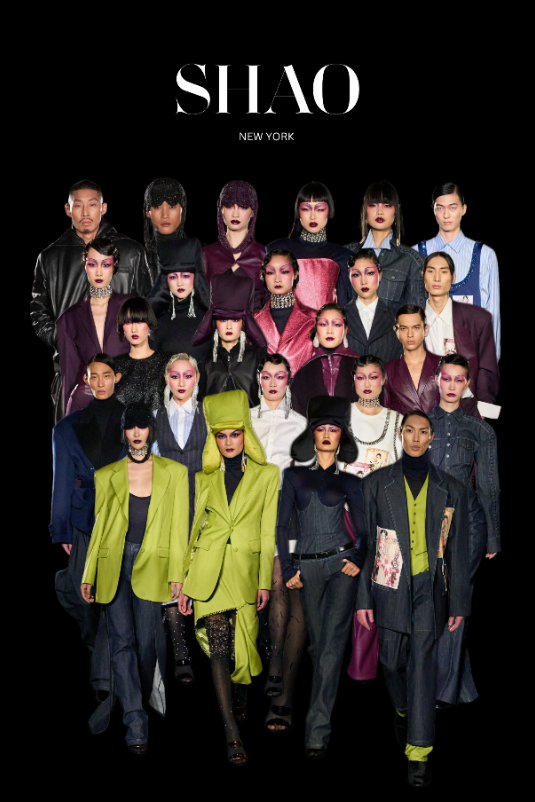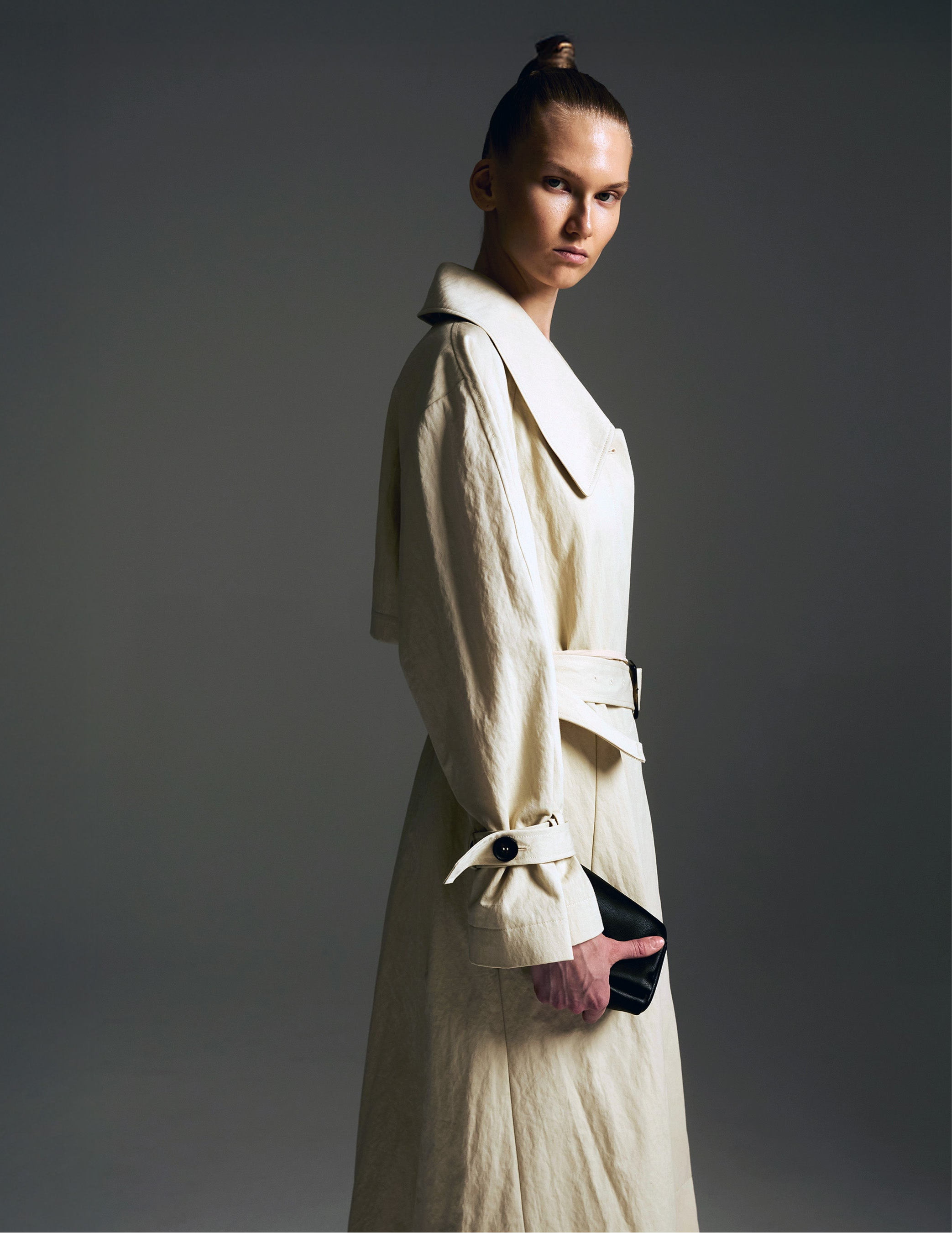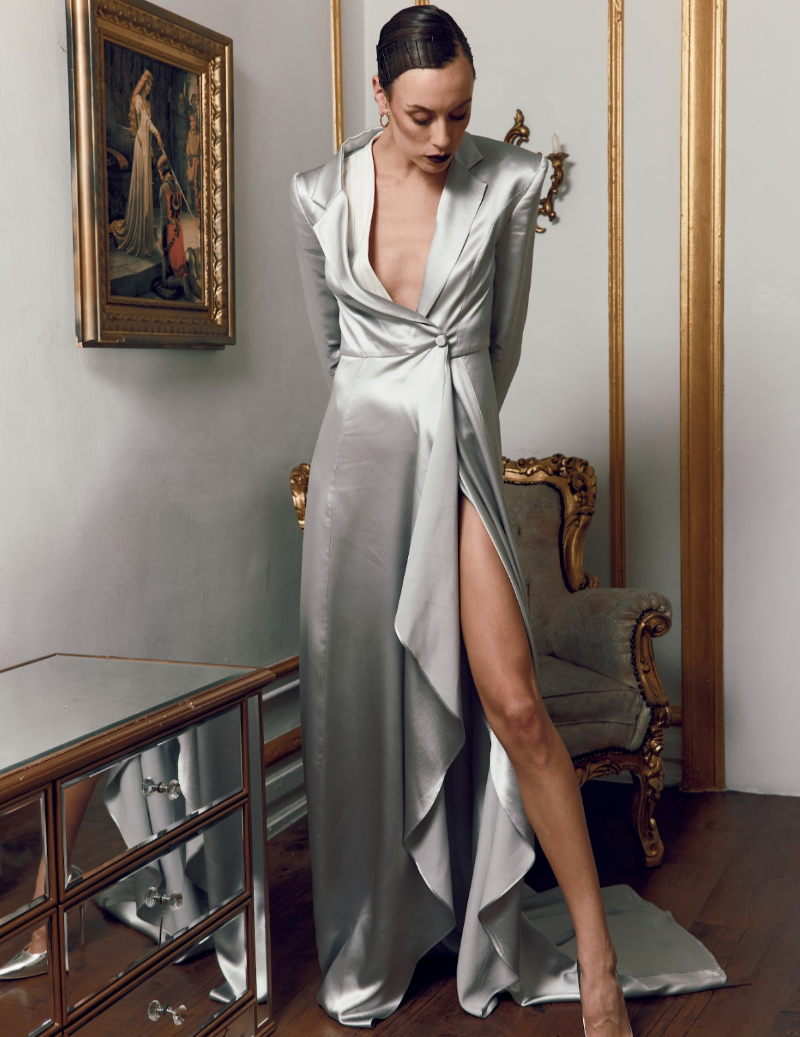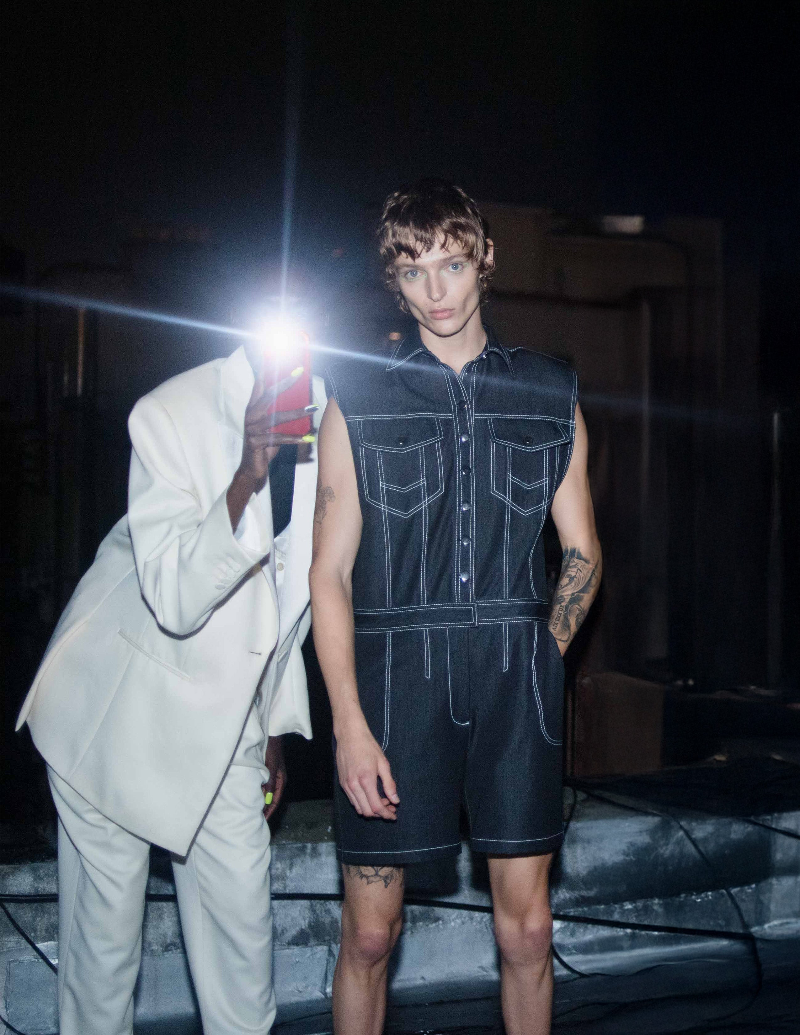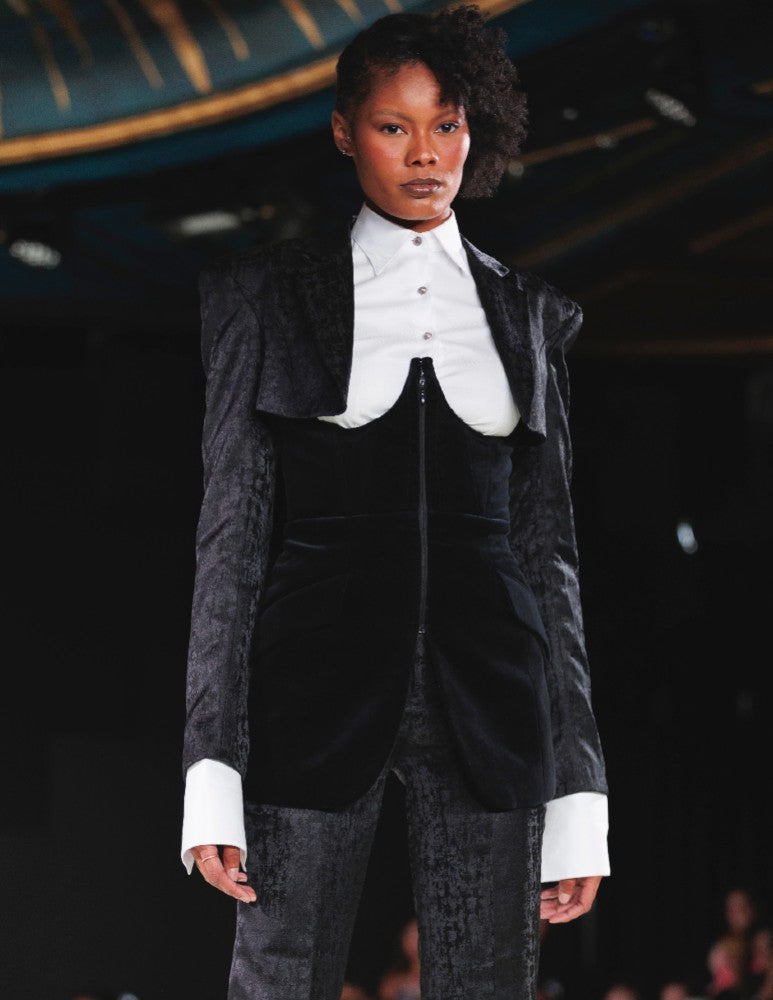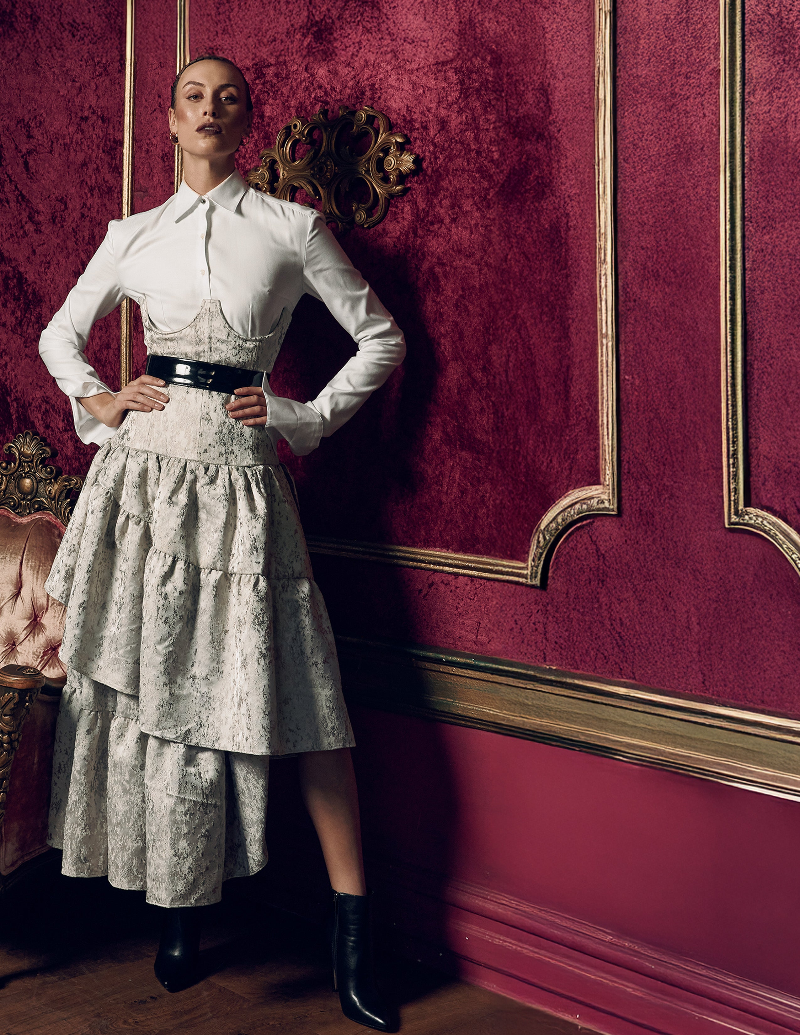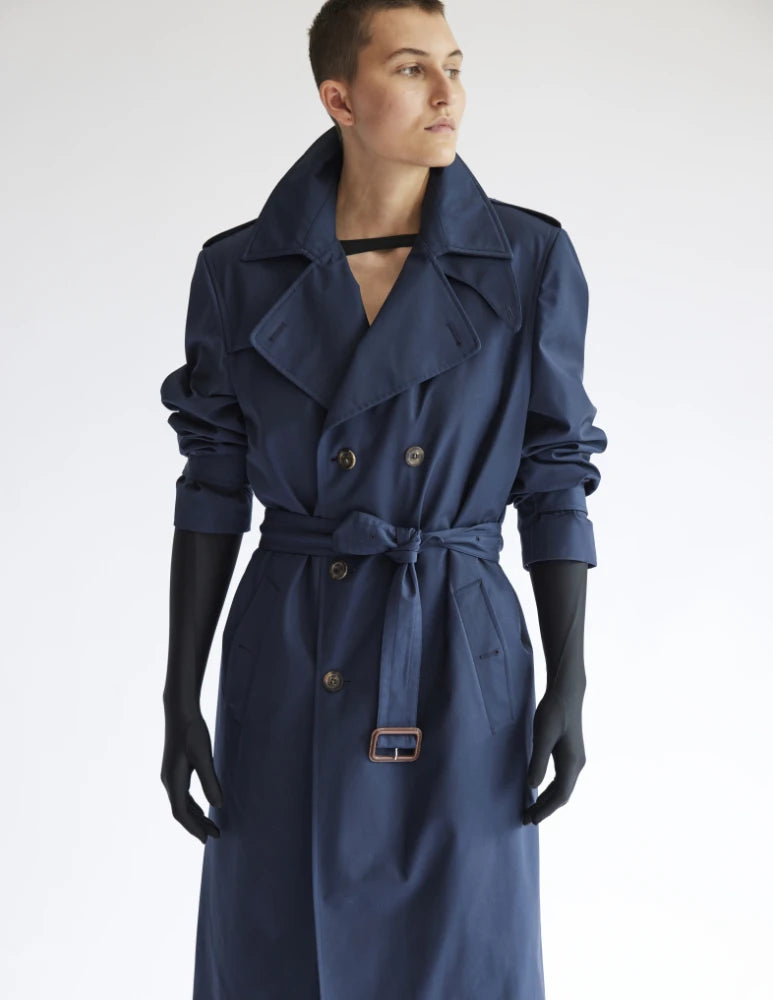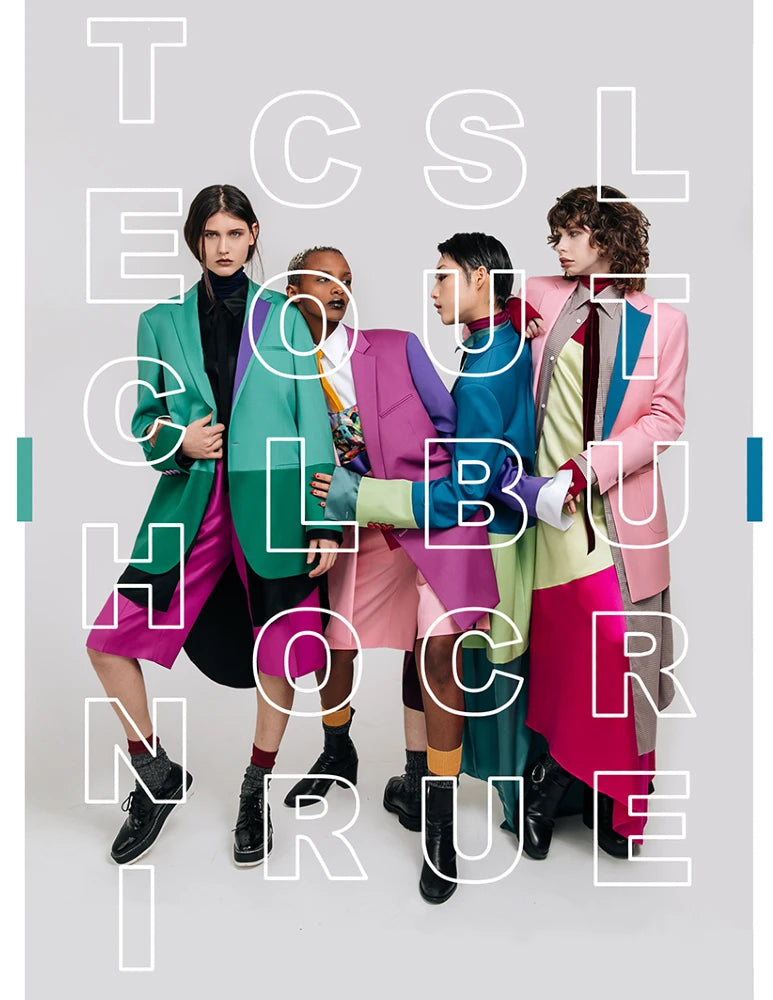The Architecture of Authenticity
There's something poetic about Cumming's relationship with castles—both real and imagined. He grew up on grounds of a Scottish estate where the original castle had been demolished due to death taxes, leaving only foundation of what should have been a Downton Abbey-esque manor. The castle set of The Traitors, he explains, represents "architectural therapy"—the house that wasn't there when he was young, now manifested as playground for his most theatrical impulses.
The Tailory New York's Gold Lamé Suit Set fits perfectly into this narrative of reconstructed grandeur. The suit doesn't simply reference luxury; it interrogates what luxury means in an era where authenticity itself has become performance category. When Cumming wears it, the metallic fabric catches studio lights like gilded details of an imaginary ballroom, creating visual language that speaks fluently in both reality television's grammar of excess and high fashion's vocabulary of precision.
The suit's architectural tailoring—structured shoulders that command attention without overwhelming the frame, silhouette that suggests both military precision and disco-era rebellion—mirrors Cumming's own approach to identity construction. Just as he's created a version of himself that exists only within castle walls of The Traitors, the Gold Lamé Suit Set exists in liminal space between costume and clothing, between performance and self-expression.
Cultural Code-Switching as High Art
What makes Cumming's appropriation of the Gold Lamé Suit Set particularly compelling is how it functions as exercise in cultural code-switching—something The Tailory New York has mastered through years of navigating intersection between East Coast street culture and luxury fashion's rarefied atmosphere. When Cumming discusses his role as "a 60-year-old man being this fashion clotheshorse, an androgynous fusion of all these feminine, crazy outfits," he's articulating something that goes deeper than simple gender fluidity.
The Gold Lamé Suit Set, in Cumming's hands, becomes statement about the performative nature of all identity—particularly masculinity. Its gleaming surface reflects cultural assumptions about who gets to wear what, when, and why. In an era when anti-trans legislation threatens basic human dignity, Cumming's unapologetic embrace of gender-fluid dressing carries political weight that extends far past entertainment value.
This aligns perfectly with The Tailory New York's founding philosophy: clothing should be vehicle for cultural dialogue, not cultural gatekeeping. The suit's original appearance on Taras Romanov in V Magazine established its bona fides within fashion's editorial ecosystem, while its migration to reality television represents something more revolutionary—the democratization of high fashion's most subversive impulses.
Technical Mastery Meets Theatrical Vision
From a craftsmanship perspective, the Gold Lamé Suit Set represents everything The Tailory New York has learned about working with challenging materials. Lamé—that notoriously difficult metallic fabric that can look either magnificently opulent or cheaply costume-y depending on execution—requires technical precision that separates genuine luxury from mass-market imitators.
The suit's construction showcases The Tailory New York's signature approach to tailoring: architectural elements that create structure without sacrificing movement, proportions that photograph beautifully under studio lights while remaining wearable during physical demands of television production. Cumming's role as host requires movement between different areas of the castle set, engagement in physical comedy, and maintaining presence through hours of filming—demands that would destroy poorly constructed eveningwear.
The choice of gold lamé itself carries historical weight that resonates with both Cumming's theatrical background and The Tailory New York's cultural synthesis approach. Lamé achieved its greatest cultural moment during the disco era, when it became uniform of nightclub rebellion and sexual liberation. Its revival in contemporary fashion represents more than nostalgia—it's reclamation of glamour's radical potential.
The Nightcrawler Connection: From Mutation to Transformation
Cumming's recent return to Marvel as Nightcrawler in the upcoming Avengers: Doomsday adds another layer to his relationship with transformative clothing. After 22 years away from the character—following what he describes as a "miserable" experience during the original X-Men films—he's returning to a role that literally involves shape-shifting and teleportation.
The parallels between Nightcrawler's mutant abilities and Cumming's sartorial shape-shifting on The Traitors demand attention. Both involve transformation as survival strategy, the ability to appear in unexpected places wearing unexpected forms. The Gold Lamé Suit Set functions as Cumming's civilian mutation—a way of accessing superhuman levels of confidence and presence without the need for blue makeup and prosthetic tails.
This connection between character and clothing reflects The Tailory New York's understanding that fashion, at its best, provides its wearer with temporary superpowers. The right suit changes how others see you while changing how you see yourself, creating new possibilities for movement through the world.
Reality Television as Runway
The Traitors' success—viewership spiked 67 percent during its third season—proved that audiences hunger for something more sophisticated than traditional reality television's tired formulas. Cumming's approach to hosting, with its self-aware theatricality and unapologetic embrace of excess, has redefined what reality television can accomplish when it stops pretending to be real and starts admitting it's performance art.
The Gold Lamé Suit Set's appearance on the show represents culmination of a trend that fashion insiders have been tracking: the migration of editorial fashion from magazine pages to small screens. Unlike the carefully controlled environment of fashion shoots, television presents unique challenges. Lighting varies from scene to scene, camera angles shift unpredictably, and garments must maintain their impact through multiple takes and angles.
The Tailory New York's Gold Lamé Suit Set passed this test spectacularly, proving that properly constructed luxury garments can translate seamlessly from editorial contexts to broadcast television. Its success on The Traitors opens new possibilities for how fashion brands can think about placement and partnership in an era when traditional media boundaries continue dissolving.
Generation X and the Golden Years
There's something particularly Gen-X about Cumming's approach to aging in public—the refusal to become invisible, the insistence on claiming space traditionally reserved for younger performers. His embrace of gender-fluid fashion at 60 represents direct challenge to cultural scripts about masculine aging, scripts that typically involve becoming more conservative, more subdued, more "appropriate."
The Gold Lamé Suit Set, worn by a 60-year-old Scottish theater veteran who grew up during the analog-to-digital transition, becomes statement about the Gen-X approach to midlife: aggressive expansion of possibility rather than graceful acceptance of diminished relevance. This generation—the first to experience both pre-internet culture and digital nativity—brings unique perspective to questions of identity and performance.
The Tailory New York's design philosophy aligns perfectly with this generational attitude: the understanding that authenticity requires continuous evolution, continuous experimentation, continuous refusal to be categorized or contained. The suit becomes manifestation of this philosophy, transforming its wearer into version of themselves that existed only in potential until the moment they put it on.
The Castle That Reality Built
The Traitors castle exists in fascinating state of architectural ambiguity—obviously a set, yet convincingly inhabitable. Cumming's costumes exist in similar liminal space: clearly theatrical, yet somehow more authentic than the casual wear that reality television hosts typically employ to signal approachability.
The Gold Lamé Suit Set's appearance in this context raises questions about the relationship between luxury and accessibility. By wearing high-fashion pieces in reality television setting, Cumming democratizes luxury without diluting its impact. The suit maintains its editorial sophistication while becoming part of viewing experience accessible to audiences who might never encounter V Magazine or high-fashion runways.
This democratization reflects The Tailory New York's broader mission: creating luxury that speaks to cultural insiders while remaining legible to wider audiences. The brand's East-West synthesis approach—honoring both Taiwanese heritage and Brooklyn street culture—operates on similar principles, finding common ground between different cultural vocabularies without sacrificing specificity or depth.
When Fashion Becomes Philosophy
Perhaps the most radical aspect of Cumming's embrace of The Tailory New York's Gold Lamé Suit Set is how it functions as applied philosophy. In a television landscape increasingly dominated by manufactured authenticity and calculated relatability, his commitment to acknowledged performance represents different approach to truth-telling.
The suit becomes part of larger argument about the relationship between surface and depth, between appearance and essence. By choosing clothes that obviously announce themselves as costumes, Cumming paradoxically achieves greater honesty than hosts who pretend their carefully selected "casual" wear represents authentic selves.
This philosophical framework aligns with The Tailory New York's understanding that fashion, at its best, provides tools for investigating identity rather than simply expressing predetermined identity. The Gold Lamé Suit Set doesn't reveal who Alan Cumming "really" is—it provides him with materials for exploring who he might become, who he's willing to be in front of cameras and audiences.
From V Magazine to Television: The Journey of Influence
The trajectory from V Magazine's editorial spread to The Traitors' reality television aesthetic illustrates something fundamental about how cultural influence moves in contemporary media landscapes. Editorial fashion, once the exclusive domain of industry insiders, now feeds directly into mainstream consciousness through platforms that didn't exist when the fashion system was first established.
Taras Romanov's original styling in V Magazine established the Gold Lamé Suit Set's credentials within fashion's editorial ecosystem, creating visual language that spoke to industry insiders about technical excellence and cultural sophistication. When Cumming adopted the piece for television, he translated that editorial vocabulary into broadcast medium that reaches millions of viewers who might never engage with traditional fashion media.
This translation process represents evolution in how luxury fashion brands can think about cultural influence and audience development. Rather than maintaining artificial barriers between editorial and entertainment contexts, successful pieces prove their versatility by maintaining impact across different media platforms and audience demographics.
The Future of Fashion in Motion
As The Traitors continues to break Emmy records and reshape reality television's aesthetic possibilities, Cumming's wardrobe choices gain influence that extends far past entertainment value. Young viewers, particularly those navigating their own relationships with gender expression and identity fluidity, see a 60-year-old man claiming space traditionally reserved for much younger performers—and claiming it while wearing gold lamé.
The Tailory New York's Gold Lamé Suit Set becomes part of this cultural education, demonstrating that luxury fashion can be both aspirational and accessible, both editorial and wearable, both serious and playful. Its journey from magazine page to television screen maps new possibilities for how fashion brands can think about cultural engagement and influence.
The success of this particular placement suggests that audiences are ready for more sophisticated approaches to fashion in media contexts. Rather than careful styling designed to appear unstudied, viewers respond to choices that acknowledge their own construction, that admit to being deliberate rather than accidental.
Questions That Shimmer Like Gold
As Cumming prepares for his return to the Marvel universe and continues his tenure as The Traitors' iconoclastic host, the Gold Lamé Suit Set's television debut raises questions that extend far past fashion or entertainment. In an era when authenticity itself has become performance category, what does it mean to choose acknowledged artifice over manufactured naturalness?
The suit's metallic surface reflects these questions back at viewers, forcing engagement with the constructed nature of all media presentation. When reality television admits it's theater, when fashion embraces its role as costume, when hosts become characters playing themselves—what new possibilities emerge for connection between performer and audience?
The Tailory New York's Gold Lamé Suit Set, in Alan Cumming's capable hands, suggests that answers might involve embracing contradiction rather than resolving it. Perhaps authenticity requires becoming skilled at shape-shifting between different versions of yourself, each one genuine in its own context, each one as real as gold lamé catching studio lights in a castle that exists only on television yet somehow feels more honest than reality itself.

